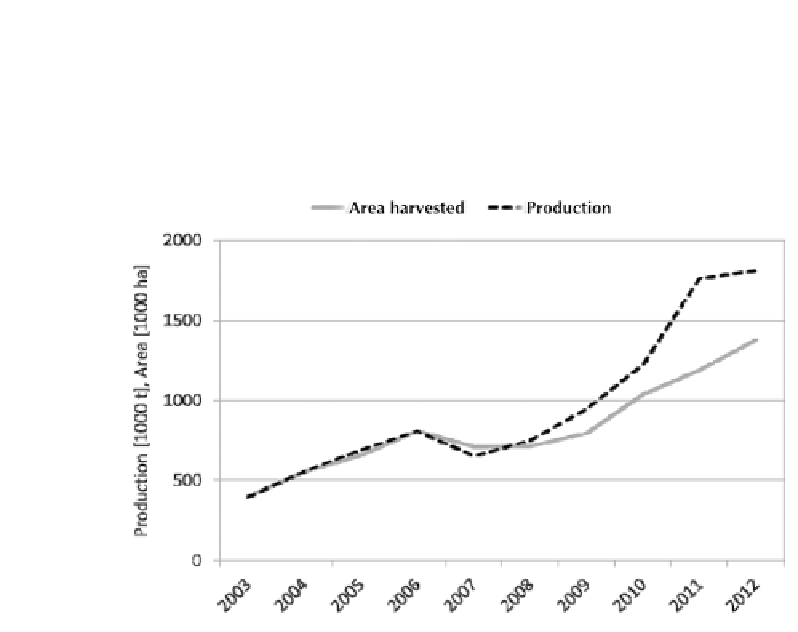Agriculture Reference
In-Depth Information
10.1 INTRODUCTION
Due to climate change and an increasing demand for food and fodder, the production
of soybeans (
Glycine max
) in Russia as well as in Western Siberia increases [1], espe-
cially since the last 5 years (Figure 10.1).
FIGURE 10.1
Production and harvested area of soybeans in Russia [2].
Soybeans as a legume crop species do have a close relationship between the avail-
ability of nitrogen either from N
2
-fi xation or soil N and the net leaf photosynthetic
rate [3]. Biological nitrogen fi xation requires necessarily the inoculation with specifi c
rhizobia bacteria, for example,
Bradyrhizobium japonicum
[4]. Soils usually lack
B.
japonicum
strains [5]. Therefore, it is important to inoculate seeds especially if soy is
planted on the fi eld for the fi rst time, otherwise no nodulation will occur [6]. High vari-
ability in nodulation [7] and N
2
fi xation [8] between soybean genotypes is reported.
By comparing the leaf chlorophyll content of plants with and without nodules, it is
possible to quantify how much inoculation may increase the N-uptake [3]. Leaf chlo-
rophyll metering, for example, by Minolta SPAD-502, appears to be a useful technique
for determining the nitrogen status of soybeans [9].
Within the framework of the interdisciplinary German-Russian project SASCHA
[10], fi eld trial was conducted to investigate the relationship between soybean variet-
ies, rhizobia inoculation, and SPAD-502 chlorophyll meter readings.
10.2 PROJECT BACKGROUND
The province Tyumen in Western Siberia is of global significance in terms of agri-
cultural production, carbon sequestration, and biodiversity preservation. At the same
time, the region is the heart of Russia's flourishing gas and oil production and has















Search WWH ::

Custom Search